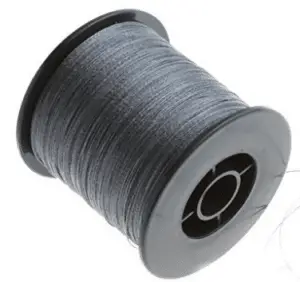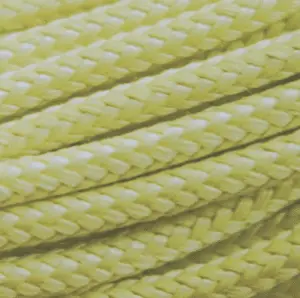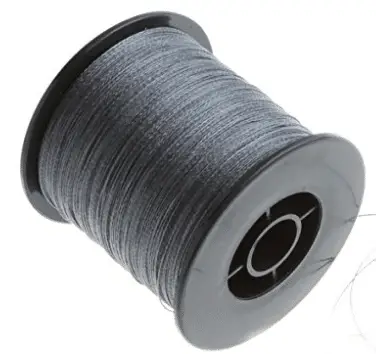 There seems to be some confusion around the difference between Kevlar line and Kevlar cord, and it’s not too hard to see why. While these terms are often used interchangeably, they can actually be two very different things.
There seems to be some confusion around the difference between Kevlar line and Kevlar cord, and it’s not too hard to see why. While these terms are often used interchangeably, they can actually be two very different things.
Obviously this makes the potential confusion understandable, but that doesn’t make it any easier for outdoor enthusiasts who need to figure out which one they need (the picture to the left would generally be considered line, not cord).
While we’ll use this short answer post to help clear these differences up, keep in mind that this can also be somewhat of a gray area.
So talking about the question: line or cord?
The rest of this post will be dedicated to giving you the information you need to tell the two apart, get an idea of how each type of material is used, and finally choose the type of Kevlar roping that will truly be best for you and your specific needs.
What Is Kevlar Line?
When a manufacturer or sports store refers to Kevlar line, usually they are talking about braided fishing line that is made from Kevlar material. All fishing line made of this material will be in the braided style and either yellow or black. If it is any other color, there are mixed fibers since Kevlar has some really unique properties and isn’t going to be directly dyed in most cases.
The line tends to be thinner, it will be braided to add tensile strength without taking up too much more space, still offers incredibly strong weight and durability for the size of the line, and will often be associated directly with fishing or as a specific versatile piece of survival gear. Think thick string type of thin at the max.
That is line, as opposed to cord.
 Just What Is Kevlar Cord?
Just What Is Kevlar Cord?
When someone is talking about Kevlar cord, it tends to be thicker than the braided fishing line, and it is often designed to be able to handle heavier weight stress in addition to appearing more rope-like in form and being used in those exact types of situation.
In fact, the best options when it comes to kevlar cord is often compared to the top rated paracord options since the two often serve the same purpose, and from there it is a matter of comparison and preference.
Cord will be thicker, larger, and because of this it will also be able to handle more weight. Cord shouldn’t be mistaken for fishing line because it will be too thick. Stronger than nylon or common fibers, about the only competition it is going to see is with truly premium paracord, which is in fact a good comparison for this.
Originally used as some of the early parachute cording for actual genuine parachutes, this material is most famously used as one of the main materials in bullet proof vests but it comes in several forms of cord, too.
The picture in this section is a close up of actual heavy duty cord.
In Conclusion
As you can see there are several differences between the two, although there are also plenty of overlapping characteristics and some manufacturers create thin Kevlar cord that intentionally straddles the line between the two. If you’re looking to do some major fishing, especially saltwater, then look at picking up Kevlar line for all of your needs out on the seas.
If you are looking for a stronger, larger, or more versatile piece of equipment that is designed for more emergency gear or for special heavy duty jobs then you want to go with actual cord. There’s a great video here from a couple of Canadian preppers who do a really nice job comparing the two to each other.
Also for more information check out this great resource:
Good Prepper Video Comparing Kevlar & Paracord

